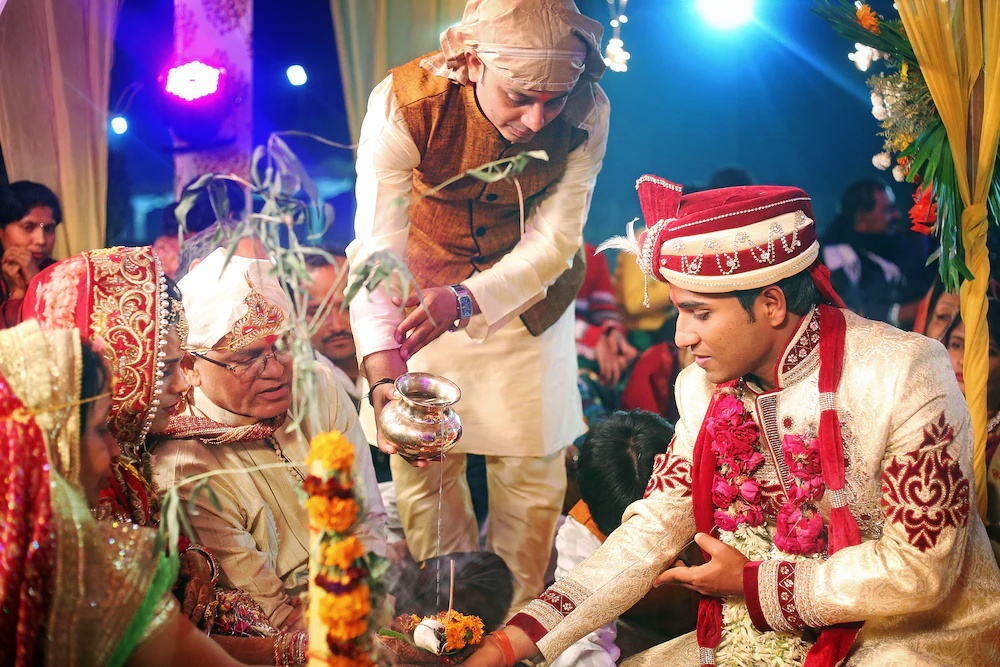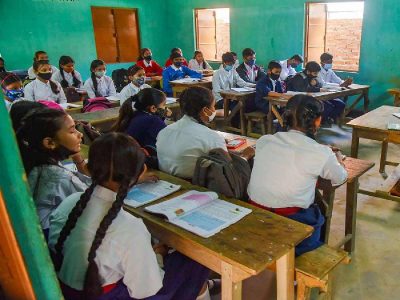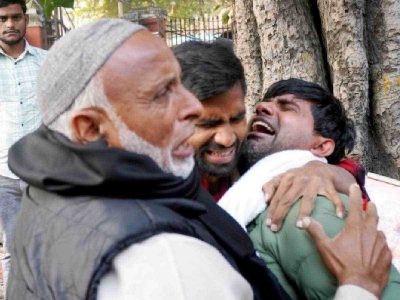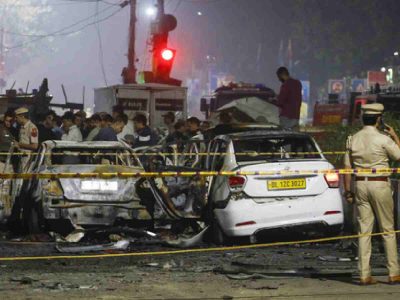The wedding season is a time to celebrate for not just the families involved but also artisans, vendors, wedding planners and caterers.
The Confederation of All India Traders (CAIT) has projected that the upcoming wedding season, commencing on Dev Uthan Ekadashi on November 23 and concluding on December 15, is poised to stimulate economic activity to the tune of ₹Rs 4.25 lakh crore.
According to statements by the CAIT National President, BC Bhartia, and the Secretary General, Praveen Khandelwal, it is anticipated that Delhi alone may witness approximately 3.5 lakh weddings, resulting in an yield of one trillion rupees. In the previous year, the same timeframe saw 3.5 million weddings, leading to a turnover of 3.75 trillion rupees.
“This year, weddings in Delhi seem to be displaying a shift. Luxury now lies in intimate details like finesse of floral arrangements. There is tilt towards sustainable weddings. Brides and grooms-tobe are much more aware of the adverse environmental impact of traditionally large-scale Indian weddings,” says Maninder S Sethi, Founder, Wedding Asia.
“Thus, they have begun to gravitate towards lesser use of plastic, refurbished furniture, and minimising of food wastage to ensure a wedding is considerate towards the environment,” he adds.
This year’s wedding event calendar is tricky as Diwali falls in the middle of the Delhi wedding season.
“Some of the wedding dates have been deferred to December and the next quarter of the year. The spirit of weddings in Delhi, however, is in full bloom,” says Sethi, who gives an example of the interest of foreign companies in Delhi’s weddings.
“Luxury fashion leader Christian Louboutin released a capsule collection called ‘The Wedding Edit’, which exemplifies international interest in the Delhi and Mumbai wedding market.”
Delhi loves dressing up for any reason, more than any other place in the country. People in the city don’t limit their fancy outfits to just family weddings; they like to look their best even for gatherings with friends.
“What makes Delhi’s fashion scene special is that it’s not just about clothes; it’s about appreciating the artistic side of fashion. Women who wear my brand’s clothes want each piece to be unique and special,” says Karan Torani, a Delhi-based fashion designer.

Having grown up around Indian weddings and drawn profound observations and inferences from his father’s profession as a tentmaker, Torani based the foundations of some of his creations on the nostalgia of Indian weddings in the late 80s and early 90s.
Small Vendors Flourish
Affluent people may seek highend bespoke outfits, while others might opt for little personalised touches within their budget. Businesses cater to both by offering a range of customisation options, from intricate embroidery for the elite to affordable mixand-match options for others.
“In Chandni Chowk, skilled artisans are renowned for crafting designer lehenga replicas. Clients bring Instagram snapshots of designer lehengas for reproductions. Sabyasachi and Manish Malhotra are prominent designers that are copied,” says Mithila Sharma, a student of fashion designing.
She explains the process followed by artisans.
“They use original lehengas as foundation, and customise by blending elements from different designers. These ‘original replicas’ vary in quality based on the budget but closely resemble the originals at a fraction of the cost, even challenging experts to differentiate them,” adds Mithila.
Expenditure on decoration constitutes 8-10% of the overall budget of the wedding. A minimalist and refined decor arrangement incurs an expenditure of approximately Rs two lakh.
“From event managers to smallscale vendors, all buyers line up here for fresh and fragrant flowers such as marigold that is sold loose as well as in strings,” says Keshav Gupta, a flower seller in Ghazipur Flower Market.
According to the sellers, big fat Indian weddings have made a comeback and therefore, the business is doing well. Decorative garlands are priced between ₹350 and ₹10,000 for a pair. The sellers start making garlands as early as 4am.
“Is saal bhi kaafi umeed hai ki dhandha acchha chalega. Ab log paisa kharch kar rahe hain dil khol kar (I am hopeful that business will do well, people are spending whole-heartedly),” quips Kamala Devi, a woman who sells flowers at the market.
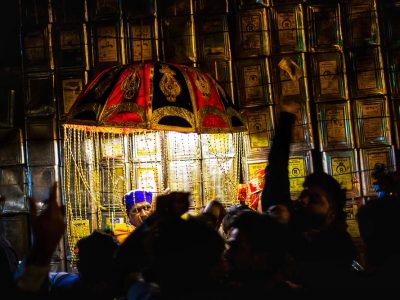
She observes that weddings in Delhi can be divided according to financial condition of the people. Whether you do intimate gathering or a grand celebration, flowers are an integral part of decoration.
She says, “Delhiites don’t hold back, they spend lavishly.” The demand starts soaring from Diwali itself, according to flower sellers.
Hospitality Booms With Wedding Bliss
The hospitality sector, comprising hotels and restaurants, thrive in the wedding season. From grand ballroom receptions to intimate garden ceremonies, demand for top-notch accommodations, gourmet feasts, and impeccable service soars.
“Jaipur has emerged as a highly sought-after destination for weddings, especially for our clients in Delhi, owing to its accessibility, immersive experiences, and hospitality,” says Nalin Mendiratta, General Manager and Regional General Manager of InterContinental, Jaipur Tonk Road.
“At InterContinental Jaipur, we have witnessed a constant flow of enquiries, resulting in the reservation of approximately 15-20% of destination weddings for Delhibased clientele.”
The hotel is strategically located in proximity to the airport and is the first luxury establishment along the new Delhi-Mumbai Expressway.
He further explains, “This renders us an ideal choice for hosting destination weddings. At InterContinental Jaipur, each wedding experience is personalised to create incredible occasions in accordance with our guests’ individual preferences.”
There is a gamut of medium and small-scale banquet halls in the NCR region and Delhi. Umang Khanna, 55, has booked Zestin Banquets for the marriage of her daughter on November 27.
He says, “We had booked the hall in August-end because we were told by the owners that this year would be more packed than before. I feel that Ghaziabad region has more options in terms of flexible prices for banquet halls than Delhi.”
On an average, the cost per plate for a wedding typically falls within the range of Rs 900 to Rs 4,000 for vegetarian. While for non-vegetarian, it starts from Rs 2,200 and goes up to Rs 12,000 and more.
A Pinch Of Inflation
The substantial increase in onion prices, from Rs 35 per kilogram on October 23 to Rs 70 per kilogram on October 29, will impact the upcoming wedding season significantly.
“Onions are a fundamental ingredient in various Indian dishes and are often used in large quantities. The increased onion prices may contribute to elevated overall wedding expenses, affecting both families and service providers involved in wedding arrangements,” informs Prerna Prakash, a teacher of Economics in Saket.
Tech Intervention
The global drone wedding photography market is poised for significant growth in the forecast period spanning from 2023 to 2030.
Sahil Hans, Director at 7 Vows Production, a wedding photography company based out of Pitampura, says, “People want to keep their memories exclusive. This element of exclusives is dominating the wedding photography industry. At this point, yes, the photography industry is booming. We are thriving!”
He adds that the changes have been massive over the past three years since people want their stories to be heard and viewed.
“Prices of wedding photography or shoots depend on the specifics the bride and groom are looking at. The basic package starts from Rs 15,000 and goes up to Rs 2 lakh. The second package starts from Rs 2 lakh and goes up to Rs 50 lakh.”
The market has expanded and so has the demand for cameras and drones.
According to Amit Srivastava, who is a shopkeeper in Nehru Place market, people are interested in buying cameras and other equipment for shoots more than ever before.
He says, “We offer drones ranging from Rs 20,000 to Rs 50,000, with a strong demand from photographers. Our clientele generally purchases two main categories of drones: quadcopters capable of lifting lightweight cameras, and hexa/octocopters designed to carry DSLR cameras. Additionally, we also cater to customers seeking advanced drones, which can range from Rs 1-5 lakh, and more budget-friendly options within the Rs 25,000-50,000 range.”
Nikhil Anand, a freelance photographer and editor, states that in Delhi, there exists a lively cultural scene, and the residents are attuned to the dynamics of social media.
Consequently, many couples aspire to make their wedding or pre-wedding photoshoots distinctive and exceptional, and are willing to invest a substantial sum of money in the process.
Likewise, the wedding card industry is booming, ranging from Rs 8,000-10,000 crore. The heart of this market lies in Delhi’s iconic neighbourhoods, including Chawri Bazaar, Karol Bagh, and Lajpat Nagar, where customers can find wedding invitations to suit their preferences.
Notably, the city hosts over 500 skilled card printers.
“The grandeur of a Delhi wedding invitation extends beyond the main card; there are 3-4 exquisite add-ons. These may include RSVP cards, reception invitations, engagement announcements, puja invites, as well as invitations to sangeet, cocktail, and mehndi ceremonies,” says Mohammad Nadeem, who runs a printing press in Chawri Bazaar.
Another interesting trend is that of online shopping. Projections suggest that by 2026, nearly a quarter of all retail transactions will occur in the digital realm, highlighting the sustained popularity of e-commerce.
“Although traditional market visits remain popular for selecting wedding attire, a significant portion of individuals now opt to purchase clothing from online retail outlets. This shift can be attributed to the fact that people typically have 4-5 pre-wedding functions to attend, making online shopping a convenient and timesaving choice,” says Poornima Dubey, a marketing researcher based in Laxmi Nagar.
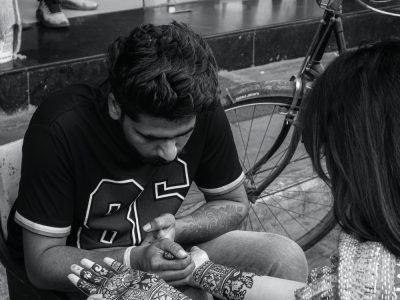
During the week ending October 15, online sales in India, led by Amazon and Flipkart, reached 47 billion rupees ($565 million), with mobile phones, electronic goods, and large appliances accounting for 67% of the sales. Meanwhile, UPI recorded digital payments of 16.46 trillion rupees in October, a 40% YoY increase, and credit card payments rose by 16% to 1.42 trillion rupees in September, according to the Reserve Bank of India.
Rising Trend Of Artisanal Sweets
A rising demand in the past few years has led to an uptick in the consumption of premium mithai, especially during the wedding season.
According to a recent food trends report from Godrej, over 50% food experts see a demand for gourmet mithai. Khoya, a Delhi-based brand, successfully delivered a freshly-made 40 kg consignment consisting of six distinct varieties of luxury sweets to the guests attending the grand wedding of Isha Ambani and Anand Piramal.
It marked a turning point for the brand.
Sid Mathur, founder and Director at Khoya Mithai, says, “During this specific season, we are poised to offer an extensive array of confectioneries. Our orders are tailored to the precise preferences of the clients. We are anticipating a substantial increase in demand, effectively doubling our production capacity to meet the requirements of this wedding season. Furthermore, we are assembling a highly skilled team to manage not only the confectionery aspect but also the entire spectrum of wedding services, including on-site catering and event coordination.”

